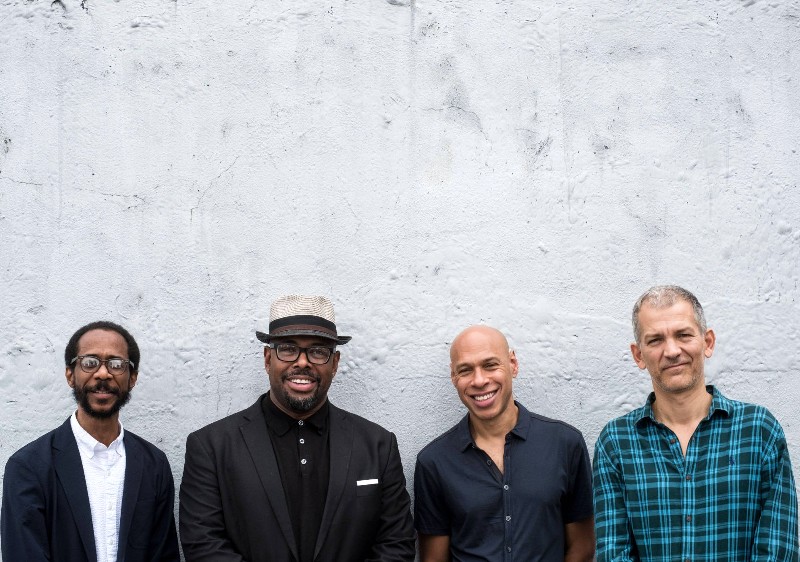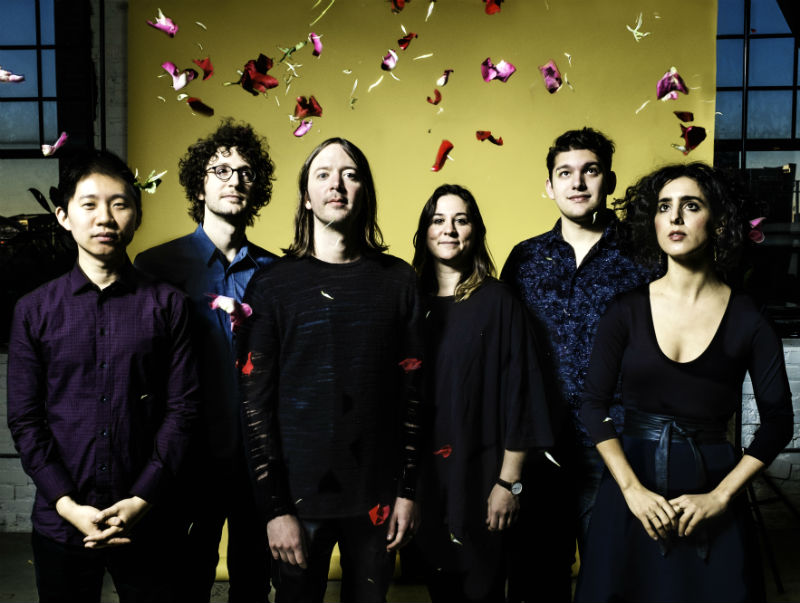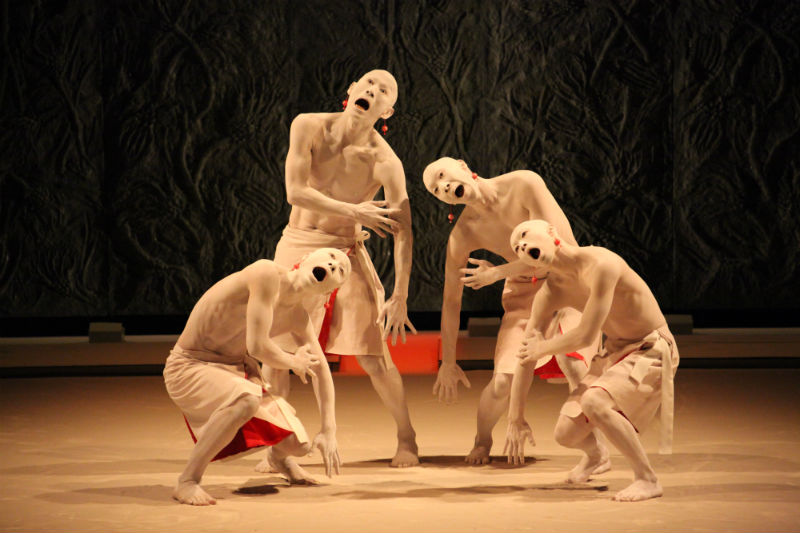Songs of the Night: Berlin Philharmonic brought Mahler's 7th back to Hill Auditorium

I’d be shocked if there were a single empty seat in the house last Saturday night.
As people ducked out of the swirling snow flurries of the storm that would blanket the town over the course of the next few hours, the lobby of the 3,000-seat Hill Auditorium began to fill to the brim with eagerly bustling patrons.
And no wonder—it’s not every day that you have the chance to hear what’s arguably the world’s best orchestra perform music by one of history’s best composers.
It’s been six years, almost to the day, since Ann Arbor heard from the Berlin Philharmonic, courtesy of the University Musical Society (UMS). When they last played Hill, to a similarly packed house, Simon Rattle was still at the helm of the orchestra, two years away from stepping down as chief conductor and artistic director, roles he’d held since 2002. I managed to attend one concert out of two that year, and it remains etched in my memory as one of the best orchestral experiences I’ve ever had—a thrilling offering of music from the Second Viennese School and a Brahms symphony that was all conducted, impressively, from memory.
Saturday’s performance was no less remarkable.
(Not Quite) A MoodSwing Reunion: Jazz all-stars electrify Hill Auditorium despite missing a key member

Joshua Redman comes across as surprisingly shy for one of the best saxophonists in the world. Instrument held slightly off to the side, he addressed the immense crowd at Hill Auditorium on Thursday night from behind his reading glasses and with an endearing timidity, almost apologetically searching for the right words as he gave titles for the night’s first two pieces and introduced his band. Never once did he betray even a hint of the fact that a minute before he’d delivered the kind of virtuosic performance only a handful of people in the world could give.
The saxophonist and composer was joined onstage by talents no less ferocious than his own, almost a full reunion of the Joshua Redman Quartet lineup from the ‘90s. Bassist Christian McBride and drummer Brian Blade—Grammy winners both—grounded the ensemble as its rhythm section throughout the night, occasionally breaking out for breathtaking solos, and the only absence from the old days was pianist Brad Mehldau, who was originally slated to appear but called in sick at the last minute.
From Marsalis to Schubert: The Philadelphia Orchestra spent two evenings serenading Hill Auditorium with contrasting programs and conductors

When Yannick Nézet-Séguin sprang onto the stage last Friday night at a packed Hill Auditorium, he was seemingly filled to the brim with energy. Though the Quebecois conductor and pianist is nearing 50, last weekend his every movement in front of the Philadelphia Orchestra seemed to be infused with a kind of youthful exuberance, from his stretch across the conductor’s podium to shake concertmaster David Kim’s hand prior to the performance, to the athletic exertions he subsequently made during the most bombastic moments of the evening’s program.
Sensitive Sounds in a Snowy Town: West-Eastern Divan Ensemble at Rackham Auditorium

“You’re a mighty and hearty lot,” said UMS President Matthew VanBesien, peering out over the snow-dusted crowd that had slowly filtered into the seats of Rackham Auditorium Wednesday evening.
It was a lighthearted joke at the expense of those would-be concert-goers who might have filled in the empty chairs throughout the venue had they not been defeated by the weather, but it wasn’t unjustified: The snowstorm that had swept over Ann Arbor throughout the previous day and night had made navigating the roads a tricky proposition, and the spacious Rackham Auditorium looked to be more empty than not.
In introducing the concert, accordingly, VanBesien invited patrons to fill in the seats towards the front, jettisoning the assigned seating in favor of creating a more compact, less spotty-looking audience for the evening’s musical entertainment. Once condensed, it looked like the venue was maybe just under half-full, give or take a few dozen people.
Those who had braved the snowstorm had turned out to see the West-Eastern Divan Ensemble, a chamber group offering sensitive interpretations of music both old and new, but perhaps better known for the quietly political origins of their parent organization, the West-Eastern Divan Orchestra. Founded in 1999 by the famed pianist and conductor Daniel Barenboim and the Palestinian-American scholar Edward Said -- famous in numerous fields for his books Orientalism and Culture and Imperialism -- the orchestra was created as a place for musicians from throughout the Middle East (notably Isreal, Palestine, and their Arab-majority neighbors) to come together to make music on an equal basis.
Be, Hear, Now: yMusic brought its contemporary classical and crossover collaborations to Rackham

If you aren’t paying attention at the beginning of Andrew Norman’s “Music in Circles” you might miss it. The first note is just so quiet, an almost imperceptible harmonic whispered high in the viola, the kind of airy, insubstantial noise you have to strain to hear.
But once you hear it you’re hooked.
That first lonely pitch is like a slow intake of breath, interrupted after a moment by a stuttering spiccato exhalation that foreshadows the energy that is to come. Slowly the viola is joined by other strings, and patiently the music unfolds and intensifies until, some two and a half minutes in the viola takes off with an up-tempo rhythmic pulse produced by bouncing the bow vertically off the strings, generating a sound that is a blend between being pitched and being a percussive noise.
From here the music grows in volume and intensity as the cello and trumpet play yearning arpeggiated lines, the bass clarinet pitches in with a fluttering falling figure, the violin scratches wildly and the flute shoots jets of air. It’s thrilling. And then it winds down again, just as patiently as the music of the opening developed.
Eventually, the piece closes out with soft, slowly moving echoes of the previous material, pared down until it’s only the viola, again, playing alone, with that same airy harmonic it began with.
“Music in Circles” has always been one of yMusic’s more popular pieces, at least on the classical music side of things, so it’s no wonder that the group chose to program it on last Friday’s performance at Rackham Auditorium.
The atmospheric dance troupe Sankai Juku transfixed the Power Center with haunting movement

There’s an image I’ve been having a hard time getting out of my head ever since the performance of Sankai Juku’s Meguri: Teeming Sea, Tranquil Land at the Power Center last weekend:
Four dancers in an eerie semi-darkness -- bald, torsos nude, bodies covered in white dust -- stand together in a circle. They stay fixed to the floor, seemingly rooted to the spot, as their bodies turn around in a unified, slow-motion gesture. Their feet rotate in place as their limbs twist together, until legs spiral around one another and the spine and neck swivel to bring the ghostly visages directly before the audience. On the faces, there is an open-mouthed image of silent, inexpressible anguish, a sort of inaudible scream whose riveting force stops your breath. For a moment, before the contorted and gnarled bodies reverse direction and rotate back, you have unshakable certainty that this is the face of a body in pain.
It’s haunting.
Then the moment passes and the spell dissipates.
There’s no pain here, not really, just illusion and mastery.
This kind of arresting image isn’t uncommon for Sankai Juku, a Paris-based troupe that practices a Japanese dance form known as butoh, an avant-garde genre that arose in the 1960s and is recognizable by its characteristic use of white body powder and shaved heads.
Double Date in Kerrytown: William Bolcom, Joan Morris, Amy Burton, and John Musto paired up for cabaret

A crowd of concert-goers buzzed with excitement last Sunday as they packed into the seats of Kerrytown Concert House, excited for an afternoon of music with a cabaret duo that over the years has emerged as a community favorite.
Pianist William Bolcom and mezzo-soprano Joan Morris, a husband and wife musical team, are among the leading performers of cabaret music active today, as well as having been members of the Ann Arbor community for over four decades. Both former faculty at the University’s School of Music, Theatre & Dance, they have been concertizing together for over 40 years, and even performed at the very first concert hosted by Kerrytown Concert House some 35 years ago. The duo was joined on the stage Sunday afternoon by another musical couple, soprano Amy Burton and pianist John Musto, for a light-hearted performance billed as “Double Date.”
The Evil That Men Do: Alice Bolin’s "Dead Girls: Essays on Surviving an American Obsession"

Without a doubt, Laura Palmer’s corpse remains one of the most enduring images to come out of ‘90s television.
Anyone who has watched the Twin Peaks premiere (either at the time of its airing or as part of the younger, revivalist crowd) is certain to recall the eerie impression that Laura is simply sleeping, bound to wake up any minute -- this despite, of course, the fact that she is quite clearly “dead, wrapped in plastic.”
The shot is memorable, perhaps, not so much because of any particular aspect of the composition, but because of the horrible incongruity of its visual and dramatic elements. The viewer is presented with a face apparently at peace, the only hints of death’s presence being the pallor of Laura’s flesh and the slight blue tint of her lips. Faraway from the brutality of Laura’s murder, the image is at such a great remove from the horrific violence behind it that it sits with us in a way that is particularly uncomfortable. But more than that, the image is important for its symbolic significance, for what its very presence on our TV screens says about the way we think and the stories we tell ourselves as a society.
Alice Bolin takes the idea of this symbolic significance as her jumping-off point in a remarkable new collection of essays -- aptly titled Dead Girls -- which she read from on August 17 at Literati Bookstore. A sprawling mosaic of analysis, cultural criticism, and memoir, Bolin’s collection touches on much more than the phenomenon of the “Dead Girl” in the American popular imagination, despite its title.
Faraway, So Close: Freddy Cole at Kerrytown Concert House

There’s an interesting look that Freddy Cole sometimes gets when he’s playing. It’s not a faraway look, exactly, but it’s as if he’s not fully present, not completely in the moment. Sitting behind the keyboard, he stares off into the audience, looking at them but not really seeing them. His hands move across the piano keys seemingly with a mind of their own, coaxing out chords and picking out melodies. It’s like he’s somewhere else.
At least that’s the impression I got last Thursday at Kerrytown Concert House, where the Freddy Cole Quartet gave a pair of evening performances. Made up by Cole on piano and vocals, Randy Napoleon on guitar, Elias Bailey on bass, and Jay Sawyer on drums, the quartet offered a refreshing and skillful taste of straight-ahead classic jazz.
Road of Life: Laura Bernstein-Machlay will discuss her essay collection, "Travelers," at Literati

There’s a moment near the end of Laura Bernstein-Machlay’s new book of essays, Travelers, in the middle of the author’s conversation with a friend on page 163, when she makes the comment, “I’m a liar … I’ve lied to everyone I know. I lie to myself every damn day.”
Out of context this excerpt might seem to cast the speaker in an uncharitable light -- an appearance that is ameliorated by having come to know the narrator as a genuine and warm person over the course of the previous 15 essays -- but it’s worth mentioning because it speaks to the heart of one of the challenges inherent in the genre Bernstein-Machlay has thrown herself into with this book. When taking oneself as a subject, how can you ever be sure that the truth is what you think it is? How can you weed out the false from the real in the stories we tell about ourselves, reinforced through repeated use?
“I had to be as honest with myself as I possibly could,” Bernstein-Machlay said in an interview. “And that meant moving past the lies I was so easily telling the world. So much that I was telling them to myself. And they weren’t big lies, they were just the stories about yourself that get you through the day.”


































